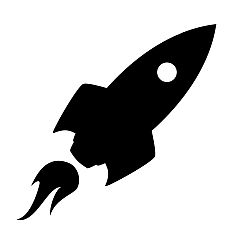Deutsch: Kalibrierung / Español: Calibración / Português: Calibração / Français: Étalonnage / Italiano: Taratura /
Calibration refers to the process of adjusting and verifying the accuracy and precision of equipment or systems. Calibration is an important part of the operation and maintenance of aerospace systems, as it helps to ensure that they are performing to their specified standards and specifications.
There are many different types of equipment and systems that can be calibrated in the aerospace industry, including sensors, instruments, and control systems. Calibration can involve the use of specialized equipment and techniques, and is often performed by trained technicians or engineers. The frequency and extent of calibration can vary depending on the specific equipment or system, and on the requirements of the aerospace industry.
Examples of equipment or systems that might be calibrated in the aerospace industry:
-
Sensors: Sensors are used in a variety of aerospace applications, including the measurement of physical parameters such as temperature, pressure, and humidity. Sensors must be calibrated in order to ensure that they are providing accurate and precise readings.
-
Instruments: Aerospace instruments, such as accelerometers, gyroscopes, and altimeters, are used to measure a variety of parameters and to provide data for the operation of aerospace systems. These instruments must be calibrated in order to ensure that they are providing accurate and precise readings.
-
Control systems: Aerospace control systems, such as flight control systems and guidance and navigation systems, are used to control and monitor the operation of aerospace systems. These systems must be calibrated in order to ensure that they are functioning properly and providing the necessary control and monitoring capabilities.
-
Test equipment: Aerospace test equipment, such as pressure gauges and torque wrenches, is used to test and evaluate the performance of aerospace systems and components. This equipment must be calibrated in order to ensure that it is providing accurate and precise readings.
Related Articles to the term 'Calibration' | |
| 'Calibration' at top500.de | ■■■■■■■■■ |
| Calibration in the industrial context refers to the process of adjusting and verifying the accuracy of . . . Read More | |
| 'Calibration' at quality-database.eu | ■■■■■■■■ |
| Calibration refers to the precise and systematic process of comparing and adjusting the measurements . . . Read More | |
| 'Accuracy' at top500.de | ■■■■■■■■ |
| Accuracy: In an industrial or industry context, accuracy refers to the degree to which a measurement, . . . Read More | |
| 'Measuring equipment' at quality-database.eu | ■■■■■■■■ |
| Measuring equipment refers to the tools and instruments used to measure various parameters with precision . . . Read More | |
| 'Calibrating' at quality-database.eu | ■■■■■■■ |
| Calibrating in the quality management context refers to the process of adjusting, verifying, or fine-tuning . . . Read More | |
| 'Trimmer' at quality-database.eu | ■■■■■■■ |
| In the quality management context, a trimmer refers to a device or instrument used for the precise adjustment . . . Read More | |
| 'ISO 8514-2' at quality-database.eu | ■■■■■■■ |
| ISO 8514-2 is a standard within the realm of quality management, specifically focusing on the calibration . . . Read More | |
| 'Chiller' at environment-database.eu | ■■■■■■■ |
| A Chiller is a device that generates a cold liquid that is circulated through an air-handling unit's . . . Read More | |
| 'Instrument' at top500.de | ■■■■■■■ |
| Instrument: In an industrial or manufacturing context, 'instrument' typically refers to a device or tool . . . Read More | |
| 'Signal' at top500.de | ■■■■■■■ |
| A 'signal' refers to a piece of information or data that is transmitted from one point to another, usually . . . Read More | |
